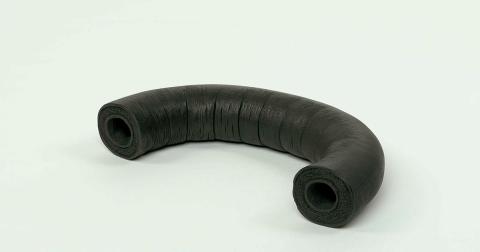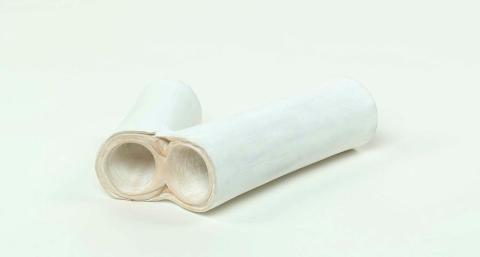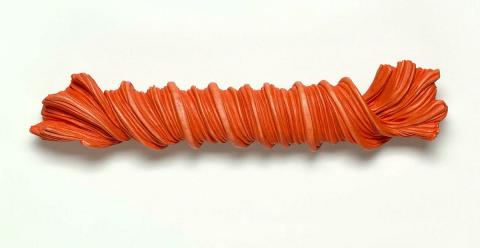Catherine Truman: Interior under scrutiny
By Julie Ewington
April 2002
In contemporary thought, the word 'body' signifies an explosion of theoretical discourses that address corporeal experience through speculative disciplines as diverse as psychoanalysis, political philosophy, feminist theory and the entire spectrum of contemporary art.1 For many artists fundamental shifts in sensibility have occurred in recent decades: 'the body' is now explored and represented through a range of simulacra, empathetic encounters and analogues, as well as through pictorial representations. The traditional territory of the artist is precisely the tension between that which is visible — the human body that artists have depicted for centuries — and that which is invisible to the naked eye, but known through other senses and forms of knowledge. In fact artists have made key contributions to a major cultural development in the late twentieth century: the acknowledgment that the body is always gendered. 'The body' is no longer assumed, in a kind of corporeal default setting, to be masculine, but the actuality of women's bodily experience is increasingly acknowledged — in law, in medicine, in philosophy, in the writing of history, in society as a whole.
In Catherine Truman's recent carved sculptures, the marks of her bodily presence are everywhere evident. She cuts, carves and shapes until the work achieves not so much a resemblance as a rapport, perhaps a sympathetic response in the medical or physiological sense, to the artist's sensations of her own body. Speaking about her work, Truman has observed that 'anatomy is both the subject and the object — personal and impersonal — imagined, sensed, analysed, observed, described and learnt.'2 This desire for synthesis is central to her project: an exquisite but rigorous integration of impulses that are usually assigned to separate disciplinary practices, to physical therapies such as massage or exercise, to figure drawing in the traditional manner, to one or other of the myriad branches of western medicine, or even to autobiography.3 Truman thus goes against the grain of contemporary specialisation. This is an intensely purposeful process, balanced between the discipline of hard-won skills, and the invocation of the unexpected. Truman stages encounters between her research and the wood, and in the process of applying her tools to its grain, she is not so much making an object along pre-arranged plans, as setting up a process that will permit her discoveries to take form.
Recently Truman wrote: 'And so I have known and felt these forms for an eternity and am only just now able to fully articulate them.'4 Perhaps, therefore, the word 'resonance' best describes what Truman is now exploring in her practice. Truman is attempting to capture the relationship with one's body, bodily sensations, remembrances of bodily actions or the residues of histories that bodies (people) have lived. Bodies are explored, represented, suggested, traced, remembered, even dismembered. But they are always honoured, whether in their beauty or their brutality. For this inquiry is always both passionate and dispassionate.
Essay by Julie Ewington, Head of Australian Art, April 2002, edited from Julie Ewington, 'Sensuous interiors under scrutiny' [exhibition leaflet], Catherine Truman and Sue Lorraine, Adelaide, 2001, unpaginated.
Endnotes
- See Tony Bond, et al., Body, Art Gallery of New South Wales, Sydney, 1997, for an influential Australian expression of these interests, and Tracey Warr and Amelia Jones (eds), The artist's body, Phaidon Press, London, 2000.
- Catherine Truman, fax to Julie Ewington, October 2001; see artist's file, QAG Library.
- In recent years Truman has become a practitioner of the Feldenkrais Method, a meticulous process of physical therapy. She was certified in 1999.
- Catherine Truman, notes on the exhibition 'Sensuous interiors under scrutiny', in an email to Julie Ewington, 28 September 2001.


